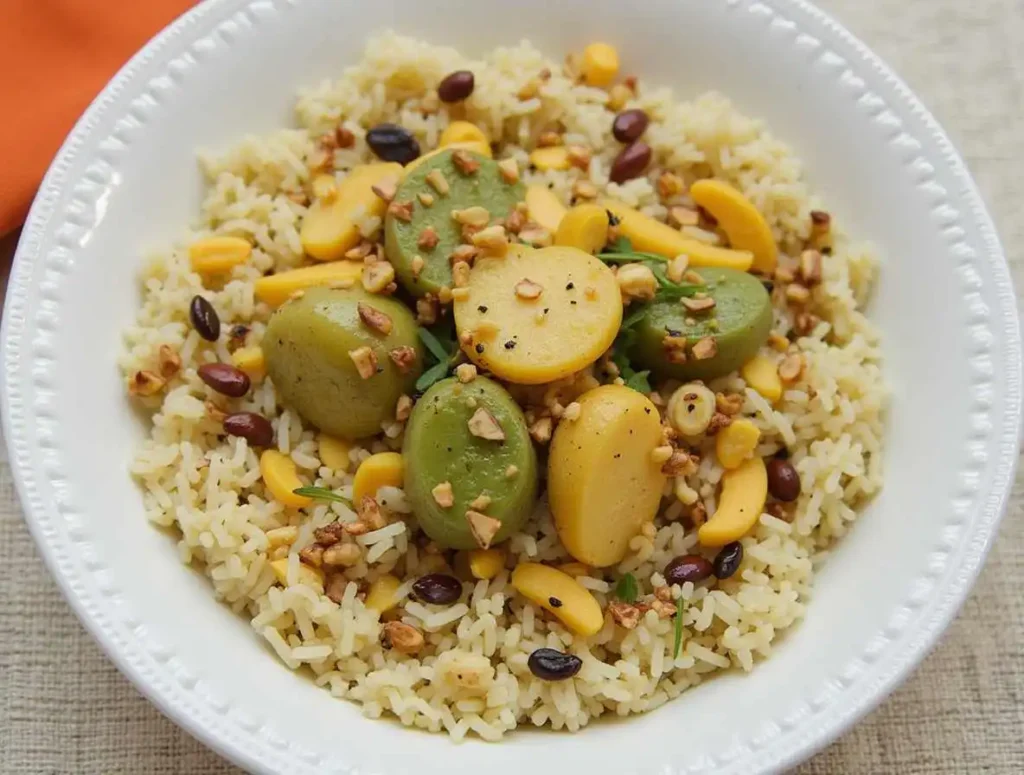Discover Delicious Plant-Based Recipes with Hearts of Palm
Hearts of palm are not just a culinary curiosity; they offer a unique flavor and texture that can transform your meals. These tender shoots, harvested from certain palm trees, have a subtle sweetness and a satisfying crunch that adds intrigue to salads, dips, and main dishes. If you’re looking to incorporate more plant-based ingredients into your cooking, hearts of palm can be a game changer. In this article, you’ll discover a variety of delicious recipes featuring hearts of palm, along with tips on selecting, preparing, and cooking with them. Let’s embark on this flavorful journey together!
Table of Contents
What Are Hearts of Palm?
Definition and Description
Hearts of palm are the edible inner cores of certain palm trees, such as the coconut palm or peach palm. Often found canned or jarred in grocery stores, they are pale, tender, and slightly sweet. Their delicate flavor and crisp texture make them a versatile ingredient in a variety of dishes, from salads to stir-fries.
Nutritional Benefits
Incorporating hearts of palm into your diet not only enhances flavor but also brings a wealth of nutritional benefits. Here’s what you can expect:
- Low in Calories: A serving of hearts of palm is low in calories, making them an excellent choice for weight management.
- High in Fiber: They are a good source of dietary fiber, promoting digestive health and helping you feel full longer.
- Rich in Nutrients: Hearts of palm provide essential vitamins and minerals, including Vitamin C, potassium, and magnesium.
Sustainability
Choosing sustainably sourced hearts of palm contributes to environmental conservation. Many producers follow eco-friendly practices that ensure the palms are harvested without damaging the ecosystem. When shopping, look for products labeled as sustainably sourced to support responsible agriculture.
How to Select and Prepare Hearts of Palm
Choosing the Right Hearts of Palm
Canned vs. Fresh
While fresh hearts of palm may be available at specialty markets, most people find canned hearts of palm more accessible. Here are the pros and cons of each:
- Canned Hearts of Palm:
- Pros: Convenient, longer shelf life, and ready to use.
- Cons: May contain added preservatives or salt.
- Fresh Hearts of Palm:
- Pros: Fresh flavor and texture.
- Cons: More challenging to find and requires preparation.
What to Look For
When selecting canned hearts of palm, consider these tips:
- Check the Ingredients: Look for minimal ingredients—preferably just hearts of palm, water, and salt.
- Quality Matters: Choose brands that prioritize quality and sustainability.
Preparing Hearts of Palm for Cooking
Cleaning and Cutting
If you’re using canned hearts of palm, simply drain and rinse them under cold water to remove excess sodium. For fresh hearts of palm, follow these steps:
- Peel the Outer Layer: Use a vegetable peeler to remove the tough outer layer.
- Slice as Needed: Cut the hearts into rounds or strips, depending on your recipe.
Storage Tips
To maximize freshness:
- Unopened Cans: Store in a cool, dry place.
- Opened Cans: Transfer any unused hearts of palm to an airtight container and refrigerate, consuming within a few days.
- Fresh Hearts: Store in the refrigerator, wrapped in a damp paper towel, for up to a week.
Plant-Based Recipes Featuring Hearts of Palm
Fresh Hearts of Palm Salad

Ingredients Table:
| Ingredient | Quantity |
|---|---|
| Fresh hearts of palm | 1 cup |
| Mixed greens | 2 cups |
| Cherry tomatoes | 1 cup |
| Avocado | 1 |
| Lemon vinaigrette | To taste |
Instructions:
- Combine Ingredients: In a large bowl, toss together the mixed greens, cherry tomatoes, and sliced avocado.
- Add Hearts of Palm: Gently fold in the hearts of palm.
- Dress the Salad: Drizzle with lemon vinaigrette and toss lightly to combine.
Key Points:
This fresh salad is perfect for warm weather. The crispness of the hearts of palm complements the other ingredients beautifully, creating a vibrant dish that’s both healthy and delicious. You can also customize this salad by adding nuts, seeds, or other vegetables you enjoy.
Creamy Hearts of Palm Dip

Ingredients Table:
| Ingredient | Quantity |
|---|---|
| Hearts of palm | 1 cup |
| Cashews | ½ cup |
| Nutritional yeast | 2 tbsp |
| Garlic | 1 clove |
| Lemon juice | 2 tbsp |
Instructions:
- Soak Cashews: Soak the cashews in water for at least 2 hours, then drain.
- Blend Ingredients: In a food processor, combine the soaked cashews, hearts of palm, nutritional yeast, garlic, and lemon juice. Blend until smooth and creamy.
- Serve: Transfer the dip to a bowl and enjoy with fresh veggies or pita chips.
Key Points:
This creamy dip is not only rich in flavor but also packed with nutrients. Nutritional yeast adds a cheesy taste without dairy, making it a great option for vegan diets. This dip is perfect for parties or as a healthy snack.
Hearts of Palm Stir-Fry

Ingredients Table:
| Ingredient | Quantity |
|---|---|
| Hearts of palm | 1 cup |
| Bell peppers | 1 cup |
| Broccoli | 1 cup |
| Soy sauce | 2 tbsp |
| Sesame oil | 1 tbsp |
Instructions:
- Heat Oil: In a large skillet, heat the sesame oil over medium-high heat.
- Add Vegetables: Stir-fry the bell peppers and broccoli for about 5-7 minutes, until they are tender-crisp.
- Add Hearts of Palm: Stir in the hearts of palm and soy sauce, cooking for an additional 2 minutes.
- Serve: Enjoy this stir-fry hot, either on its own or over rice or quinoa.
Key Points:
This stir-fry is a quick and easy meal option packed with vegetables. The combination of flavors creates a delightful dish that is not only nutritious but also satisfying. Feel free to experiment with different vegetables or proteins based on your preferences.
Tips for Cooking with Hearts of Palm
Flavor Pairings
To enhance the flavors of hearts of palm, consider these complementary ingredients:
- Herbs: Cilantro, parsley, or basil add a fresh touch.
- Citrus: Lime or lemon juice brightens up dishes.
- Spices: Cumin, paprika, and chili powder can add depth and warmth.
Cooking Techniques
Hearts of palm can be used in various cooking methods to highlight their unique texture:
- Grilling: Add a smoky flavor by grilling hearts of palm slices.
- Roasting: Roast them with other vegetables to create a hearty dish.
FAQ About Hearts of Palm Recipes
What are some easy recipes with hearts of palm?
There are plenty of simple recipes you can try! In addition to the salad, dip, and stir-fry mentioned above, you can make a hearty pasta dish, pizza topping, or even add hearts of palm to soups and stews for added texture and flavor.
Can hearts of palm be eaten raw?
Yes, hearts of palm can be enjoyed raw! Their crisp texture and mild flavor make them an excellent addition to salads, salsas, or as a topping for various dishes.
Are hearts of palm healthy?
Absolutely! Hearts of palm are low in calories, high in fiber, and rich in vitamins and minerals. Incorporating them into your diet can contribute to overall health and wellness.
Conclusion
Incorporating hearts of palm into your plant-based recipes not only diversifies your meals but also supports sustainable eating practices. With their unique texture and flavor, hearts of palm can elevate a variety of dishes, from refreshing salads to hearty stir-fries. Now is the perfect time to explore the culinary possibilities they offer. So why not try one of these recipes today? Your taste buds will thank you, and you’ll be delighted by the nutritional benefits they provide.



Call to Action
If you enjoyed this article, share your favorite hearts of palm recipe in the comments below! Have you tried any of the dishes mentioned? Let us know how they turned out. Happy cooking!
These sources provide additional information about hearts of palm, plant-based cooking, and nutrition:
- Nutritional Information on Hearts of Palm:
- Healthline: Hearts of Palm Nutrition Facts
- This article provides an overview of the nutritional benefits of hearts of palm.
- Sustainability of Hearts of Palm:
- The World Wildlife Fund (WWF): Hearts of Palm
- This resource discusses the environmental impact of harvesting hearts of palm and sustainable practices.
- Plant-Based Cooking Tips:
- Forks Over Knives: Plant-Based Cooking
- A comprehensive resource for plant-based recipes and cooking tips.
- Recipes with Hearts of Palm:
- Minimalist Baker: Hearts of Palm Recipes
- A collection of recipes that specifically feature hearts of palm, showcasing their versatility.
- General Benefits of a Plant-Based Diet:
- Harvard Health Publishing: Benefits of a Plant-Based Diet
- An overview of the health benefits associated with a plant-based diet, which can complement the focus of your article.
These resources will enhance your article’s credibility and provide readers with additional avenues to explore the topic of hearts of palm and plant-based cooking

